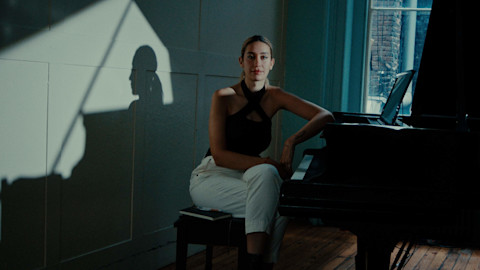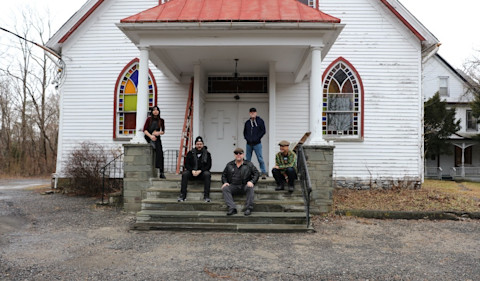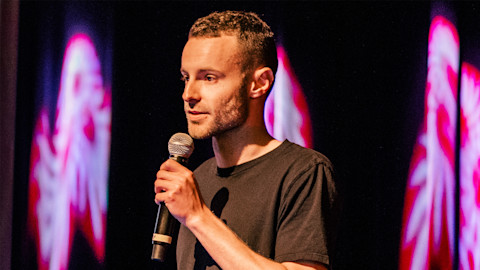Media theorist and curator DeForrest Brown Jr. on where the next generation of technology will take music and the power of the collective.
The evolution of music has always been told through its mediums. Over the last few decades, we’ve moved from relative scarcity into overwhelming ubiquity, where anyone with a phone signal has access to an infinite library of sounds. Media theorist and curator DeForrest Brown Jr. has been thinking about where the next generation of technology will take music, and how artists can best navigate that uncharted future. At a recent Co.Lab event centering around release strategies we talked to Brown about the power of the collective, why artists need to think in concepts, and why you should always be looking forward.
Spotify for Artists: What will music releases look like in 100 years?
DeForrest Brown Jr.: To avoid being too pessimistic about the trajectory of current consuming habits, I’ll suggest that the radio is an interesting outlet in the wake of music becoming more content driven and space-filling with a high per capita and turnover rate. Platforms like NTS Radio or the online geography of Quantum Natives’ site-specific works seems more promising for creative development, releasing, and archiving. Jeff Mills’ radio show as the Wizard or Autechre’s recent NTS Radio Sessions come to mind as they both explored the open airwaves as a way to compose for an ambient environment, but more institutional and curated. I’d also look towards the label and collective PTP (fka Purple Tape Pedigree) and its Silent Weapons event and fundraiser series, where artists are free to engage a public space and hold dialogue with an audience while supporting people in need.
What role will technology play in how music is debuted and consumed?
I’ll lean on poet and media scholar Tung-Hui Hu here, and say that technology as it is currently being employed creates a virtualized service-oriented mindset, a feed through which consumers are “fed” music content or lead through a forest of musical discoveries. The personal intimacy that a listener feels when consuming music more often times than not is allocated to the platform that provides or a content producer than the music itself. The debuting of new music or content is usually considered as an unveiling of assumed labor on the part of a media personality, and answers the unasked question, “What has Taylor Swift been up to for the last year and a half?” Recently, Mexican producer Upgrayedd Smurphy released two albums, one was a proper album of original music and the other a reconceptualization and adaptation of recordings from commissioned live performances of that same material. Income (however large or small) was generated and pocketed across a few different steps: money from the album, money to perform the material, money from repackaging that material for a separate unique recorded experience. This also puts the artists in a position to be able to control every aspect of their release and tour cycle.
DeForrest Brown Jr at Co.Labs: Revenue Streams
In what ways can musicians leverage multimedia and cross-platform collaboration to give their releases more impact?
As a media theorist rummaging through the music industry, I try to explicate and challenge the operational habits that I observe from organization to organization. I’m a firm believer in the think tank, focus group method or Bruce Sterling’s take on Brian Eno’s logic of the scenius, the communal genius. A product takes a village, kinship. Recently, I finished a “mixtape” called the Wage of Being Black is Death with sound artist Jon Davies/Kepla. The process of making it was very group oriented and assembly line-like in the sense that I sent Jon the concept, lyrics, titles and a standard of 7 tracks and 20 minutes. He responded by quickly creating a musical spine that, I with the guidance of Jacklyn Miller/Voice Training, follied sounds and vocals over. The cover was conceived by photographer and designer Ting Ding through a series of conversations, and Geng of PTP picked up the release chose limited cassette and digital as it’s format and now the product is here. This took about a week or so. Each person or organization in the process has a role and value that is essential to the final product, or products to come.
What’s one piece of advice you’d give to artists looking at collaboration as a way to drive their release?
Conceptualize your product from start to finish, talk about every aspect with your collaborator. Even if you’re not interested in your work being about a particular thing, being able to articulate what affect your product is ultimately trying to sell gives your release legs to stand on and tangible details for labels and publications to draw from. Know where you want to perform, don’t just play gigs. Futurecast, speculate on what options are available for you; self-criticize, but don’t toil. Collaborations should pull an artist out of the doubt phase of creation and inspire. I feel a deep kinship with every person that I collaborate with, and consider where they are coming from, how our meeting affects our trajectories. Design with and for community and you cannot fail.
-Spotify for Artists
Popular Stories
video
How Julia Wolf Made It




